Sustainable farming practices explained
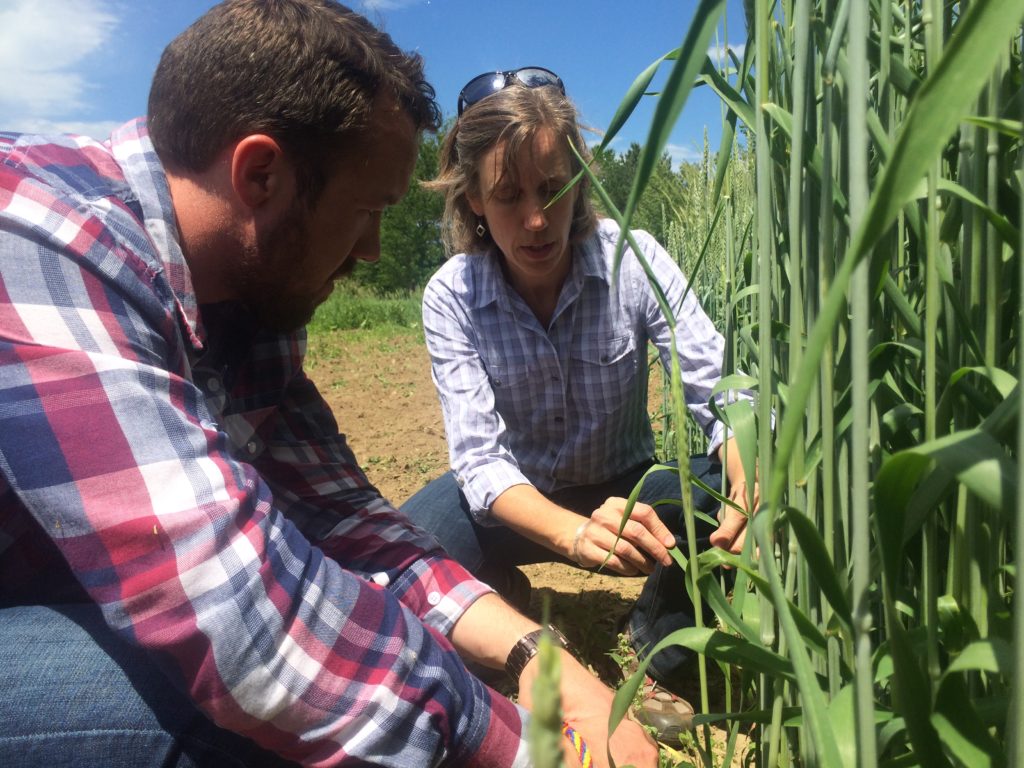
With all the lingo and jargon, farming sustainably can seem like an inscrutable task. Once you have sustainable farming practices explained, though, the whole process appears less daunting.
The exact definition of sustainable farming depends on who you ask. In general, farming practices are considered sustainable when they are done in a way that will not compromise the ability to farm in the future.
“I like to refer back to the sustainability triangle,” said Caleb Goossen, organic crop and conservation specialist at the Maine Organic Farmers and Gardeners Association. “[Sustainable farming] is ideally environmentally sustainable, economically sustainable and socially sustainable.”
In other words, sustainable farming is rooted in the health of the land, but also considers social and economic aspects of farming, like finding a market for products and managing labor.
“Most people want to leave a legacy,” said Carol Williams, executive director of the Southern Sustainable Agriculture Working Group. “One of the biggest things of concern in sustainability is economic resiliency. A farmer can manage their farm in such a way to withstand risks and uncertainty.”
For many farmers, sustainable farming practices are a matter of survival in a changing world.
“I think that to survive these days in farming, you really have to think ahead and think of the changing economic [and] social landscape,” said Mickie Swisher, director of the Center for Sustainable and Organic Food Systems at the University of Florida. “Every sustainable operation is going to be different. There are no recipe books for sustainability.”
Sustainable farming uses a number of different practices and techniques. Here are 16 sustainable farming practices explained by experts in the field.
Agroforestry

Agroforestry is the practice of growing trees and shrubs amongst crops and grazing land.
“[Agroforestry] increases the structural complexity [of the land] because you have different layers of habitats,” said Amanda Rodewald, professor and senior director of conservation science at Cornell University. “It reduces the need for chemical inputs like fertilizers and pesticides, as well as irrigation that is oftentimes needed in different agriculture systems.”
The inclusion of trees can also reduce temperatures on the land and prevent runoff and erosion, which conserves soil and water. Increased plant diversity makes the system less susceptible to disease. Trees and shrubs can also aid soil health.
“Many of the trees planted in agroforestry are nitrogen-fixing trees helping to improve the nutrients in the soil,” Rodewald said.
Moreover, agroforestry practices additional income for farmers.
“One of the things that people are really interested in, especially small-holder farmers, is that it can provide another revenue stream,” Rodewald said. “You can harvest the trees. You can harvest some of the fruits and fibers and sell those on the market.”
There are some challenges to agroforestry, including the cost of purchasing, planting and establishing the trees.
“Costs are going to vary based on agricultural system and region that you’re working,” Rodewald said.
Rodewald primarily studies wild birds in agroforestry systems in South America and said agroforestry is a great tool to marry wildlife conservation with social and economic prosperity.
“There are so many benefits on the social side, the economic side and the ecological side that come together,” she said. “It’s not necessarily some altruistic decision. There are real benefits.”
Composting
Composting is the process of gathering and managing organic waste in order to break it down into fertilizer. There are a variety of different methods for composting, including aerated composting, which feeds the microbes that break down organic material by agitating the soil and introducing oxygen to the system, and vermicomposting, which uses worms to break down organic material.
Composting helps reduce food waste while sustainably returning nutrients back to the soil. Quality compost can also reduce the need for chemical fertilizers.
Many gardeners are farmers purchase compost, but they can save money on gardening supplies by making compost for themselves. Even city dwellers can keep compost bins in their apartments and bring the material to local farms, farmers markets or other drop-off points.
Conservation tillage
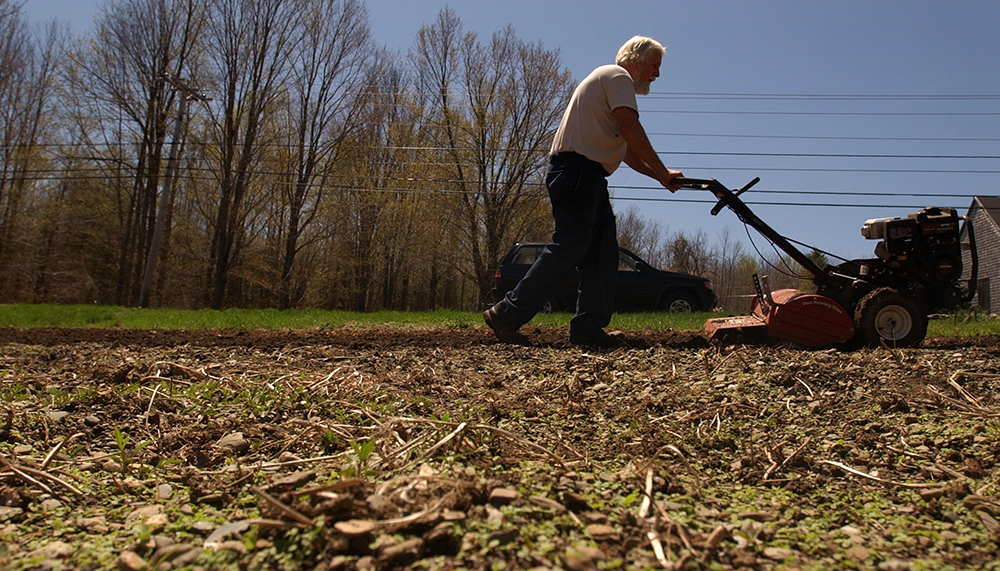
Conservation tillage is reducing or eliminating tillage in order to promote soil health.
Tilling is digging, stirring and breaking up soil after harvest. The act reduces soil compaction and helps prevent weeds from taking root. However, tilling also oxidizes the soil, which speeds up the decomposition of the organic matter and removes the vegetative matter left behind from the previous harvest, both of which are essential to the structure of the soil and the growth of healthy crops.
Conservation tillage improves soil health, which leads to higher yields. By improving soil health, conservation tillage also increases resilience against extreme weather events.
Weed management when implementing conservation tillage can be more difficult initially, especially for farmers who do not use herbicides. The risk can be mitigated, however, if farmers plan carefully beforehand.
The best method for conservation tillage will depend on the land. Conservation tillage also pairs well with other sustainable agricultural methods, like planting cover crops.
Cover crops
Cover crops are crops sown between seasons after a harvest in order to maintain healthy soil.
By adding roots back into the ground, cover crops hold the soil together and outcompete weeds. Some cover crops also return nutrients to the soil through nitrogen-fixing. Farmers generally use cover crops to break up the compaction of soil that comes from seasons of use, which helps with their long term health and sustainability. Cover crops have other benefits, including moisture retention and weed control.
Cover crops can also reduce the need for inputs like pesticides, as well as providing forage for pasture-raised animals through the winter.
Though some cover crops can be harvested and used, they generally are not used as a cash crop. Choosing the best cover crop for your land will depend on the specific needs of your soil and your climate.
Crop rotation
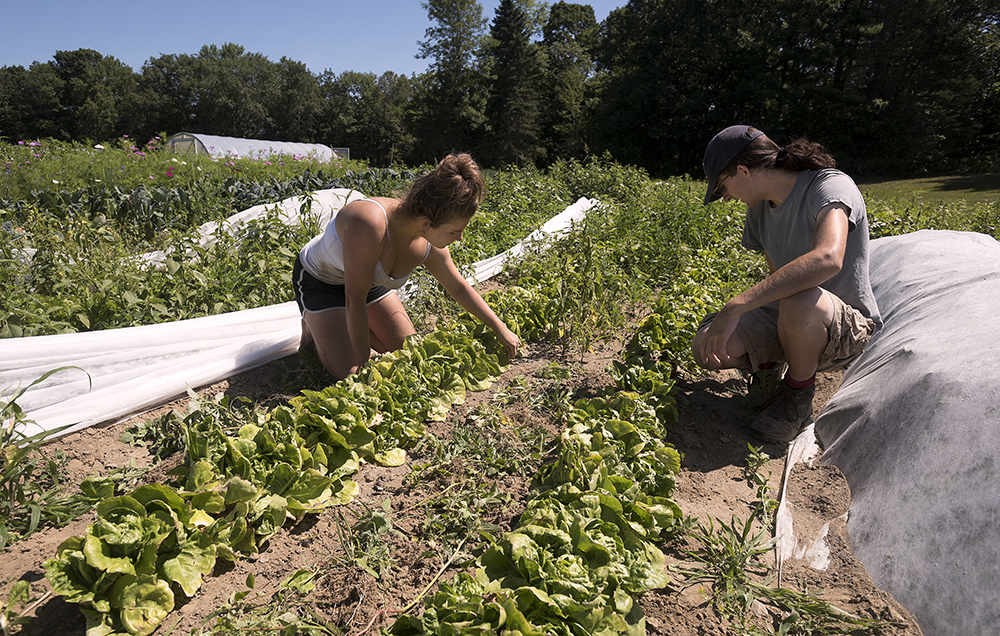
With crop rotation, the types of crops grown and the locations in which they are grown are carefully planned, planted and picked in a pattern that best promotes the health of the soil.
“Crop rotation is a good practice for anybody gardening [or] farming,” said Ruth Beck, agronomy field specialist at the South Dakota State University Cooperative Extension. “Building our diversity into our gardening or cropping systems is going to help us to match Mother Nature, or else Mother Nature is going to bring problems into the system.”
Crop rotation helps with pest management. Different crops attract different pests, so regular rotation helps to ease the pressure from any one insect or disease.
“It’s a natural way to reduce your pest pressures,” Beck explained. “Each crop brings something different to your soil and environment.”
Farmers starting with crop rotation may have trouble finding new markets.
“Sometimes some areas really have developed markets for certain crops,” Beck admitted. “It is easy to take corn or soybeans to a local elevator, but it might not be so easy to take field peas. We might have to go out and look for those markets.”
Figuring out the best crop rotation pattern for a specific plot of land also requires experimentation.
“I think it’s trial and error, [along with] watching your neighbor and seeing what works for them,” Beck said.
Forest farming
Forest farming is the intentional cultivation of edible, medicinal or decorative specialty crops in either native or planted woodlands.
Forest farming is not to be confused with foraging or wildcrafting, which is the gathering of naturally-occurring plants from native forests. Forest farming applies to landowners cultivating trees for a purpose, such as timber.
“Say you have a forest that you manage on your farm for ecological benefits, or maybe eventually some of that will be harvested for timber,” Williams explained. “Forest farming would refer to the intentional use of mushroom-growing systems under the canopy.”
Forest farming provides profitable opportunities for nut, fruit and maple producers while keeping healthy forest habitats intact.
Integrated pest management

Integrated pest management is a system of pest management that combines chemical and non-chemical methods, like row covers, crop rotation and companion planting. The goal is to create the most effective and productive pest management plan for a given plot of land.
Critics of integrated pest management cite its reliance as pesticides as absolutely environmentally harmful. Integrated pest management experts assert that agriculture will never get away from pesticide use entirely, and integrated pest management helps to optimize the use of chemical inputs while maximizing crop production.
“I would recommend integrated pest management to any farmer, whether they are conventional or organic,” Goossen said.
Mulching
Mulching is the process of covering and protecting the soil to help it retain moisture and promote microbe health.
“You’re covering and you’re protecting the soil,” said Meg McGrath, associate professor of plant pathology at Cornell University. “It’s also good for holding in moisture. Your microbes are going to be a little happier. If you’re organic mulching, you’re going to put a lot more organic matter into the soil.”
Mulching also helps with weed management, which reduces the labor needs on a farm.
“Weed management tends to be a big battle with organic growers,” McGrath said.
There are many different kinds of mulch, from leaf mulch to plastic mulch, each with their own advantages.
“A lot of it depends on someone’s scale and what they have available,” McGrath said. “If you have available organic mulching, I think that’s a really great way to go. For a home gardener with a lawn, you have grass clippings. Any way you cover the soil, be it plastic mulch or tarping, [will help].”
Pasture raising
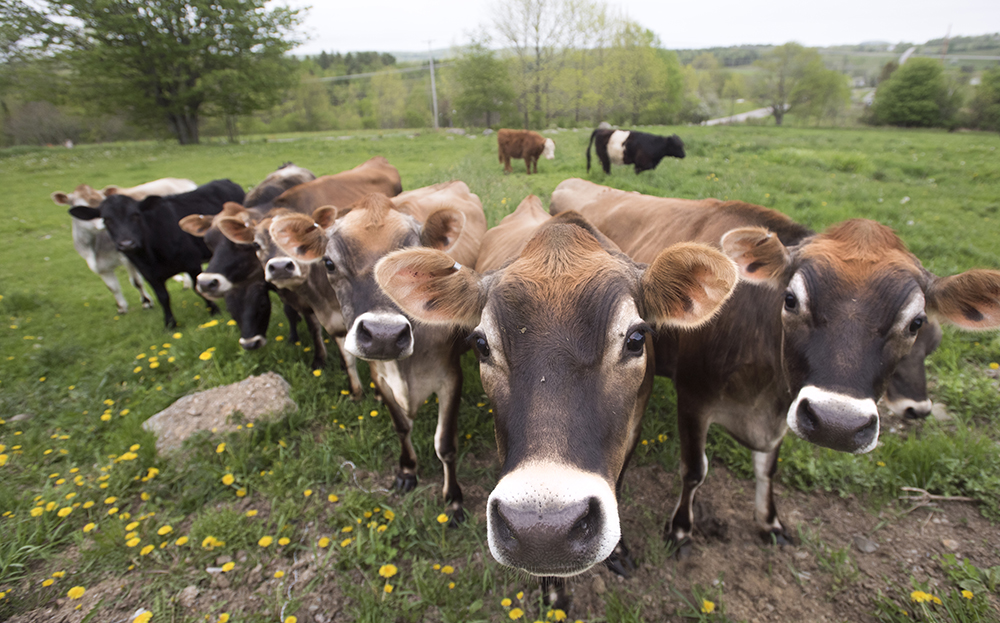
Animal poop is great fertilizer. Allowing livestock to graze on pasture instead of feeding them in confinement improves the animals’ health while the animals improve the fertility of the soil with their manure.
“The most sustainable thing to do with livestock is to have them connected directly to the land and not have them confined in feeding operations,” Williams said. “Animals out walking on the land and distributing dung as they go, but with the stocking rate of animals, it’s not an overabundance of their dung and the nutrients they contain.”
The heavy footfall of cows and other livestock compacts the soil and helps prevent erosion.
Raising livestock on pasture can be labor-intensive and expensive. Cows need to be wrangled, and healthy pastures often need to be maintained.
Often, farmers will make up for this by charging a premium on products from pasture-raised livestock. Research shows that the meat, eggs and dairy products from pasture-raised animals is healthier and more nutritious than those raised in confinement.
Permaculture
Permaculture is a garden design and maintenance philosophy that emphasizes working with natural ecosystems instead of modifying them in order to produce food, energy, shelter and material goods.
To get started with permaculture, experts recommend observing the land for a year, including what parts of your land get water and what areas get sun and shade, and then planting the crops that are best suited to the specifications of the land. Permaculture systems are frequently no-till. Other permaculture techniques include composting, planning, planting and watering.
Permaculture uses the ideas of “zones of use” to help manage the design and maintenance of the land. Zone 0 is the home, and Zone 5 is the self-sustaining wilderness. Every zone out from the home towards the wilderness require decreasing levels of time and energy to maintain.
Precision agriculture

Precision agriculture integrates technologies like drones and soil moisture sensors into farming to make systems more efficient. Precision agriculture helps farmers use fertilizer and water more judiciously and thus, decreases costs over time. Conserving inputs like water and fertilizer also helps the environment.
Precision agriculture has so far been used mainly by large farms, but may catch on with small farms, too. However, small farmers need to seriously weigh the costs and benefits of precision agriculture technologies, as they can be expensive and take time to learn how to use effectively.
Polyculture
In contrast to monoculture, where a single crop is cultivated in an area, polyculture systems have several types of crops (and perhaps some animals) raised simultaneously.
“Having that diversity of plants creates a diversity of insect life and soil life that often helps reduce pest issues,” Goossen said. “It can be a hedge against the failure of one crop.”
Managing a polyculture system can be challenging, though.
“It’s very labor-intensive and that’s a problem even for small farmers who have to worry about labor,” Swisher said. “There’s a lot to be done.”
Some farmers cope by developing polyculture plots on a small area of their land to start and scaling up over time. Others divide their single-crop plots into smaller, intermingled parts.
“Instead of having one field that’s just brassicas, they have other crops in alternating rows or interplanted,” Goossen said.
Regenerative agriculture
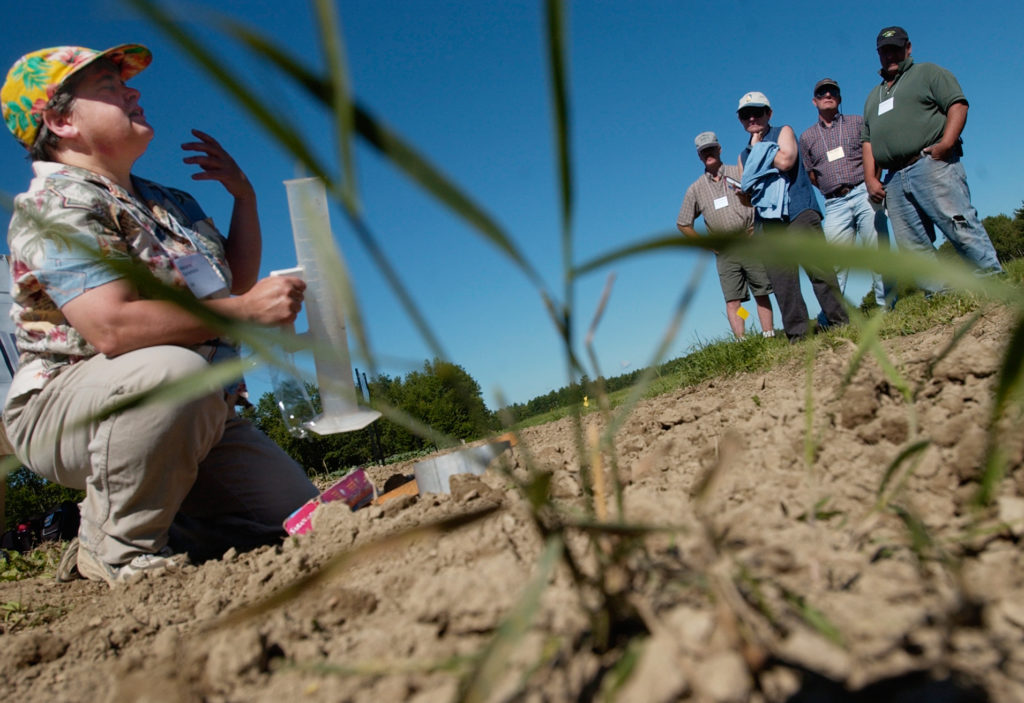
Regenerative agriculture is an approach to farming that works with the natural systems to repair the landscape, soil structure, biodiversity and climate of a farm system, particularly those that were once poorly-managed.
Promoting soil health is at the foundation of regenerative agriculture. Regenerative agriculture combines many other sustainable agriculture methods to restore the land, including reducing tillage, maintaining roots in the soil, promoting biodiversity and integrating livestock with crop production.
Over time, regenerative agriculture practices increase the health and productivity of the land. The crops produced on land farmed regeneratively will be healthier, more nutrient-dense and more resilient to extreme weather events. Building healthy, resilient land also saves farmers money on agricultural inputs.
The concept of regenerative agriculture is constantly evolving to include other aspects of sustainability. Sometimes, the principles of regenerative agriculture also consider social and economic sustainability, like treating animals well and paying people a living wage. Regenerative agriculture requires some capital costs, though, as well as a fair amount of knowledge and advanced planning.
Rewilding
Rewilding is the practice of allowing natural processes and native vegetation to take over parts of a property. Compared to permaculture, rewilding less design-based and more fully embracing of wilderness.
Rewilding improves the natural health of the land and provides more opportunities for foraging. The process of rewilding can be passive, or farmers can play a role in kick-starting the transition by researching native plants and sowing seeds.
Rewilding is fairly inexpensive. Many rewilded properties do not require machinery to maintain, which also helps reduce the use of fossil fuels.
Silvopasture

Silvopasture combines principles of agroforestry — growing trees and shrubs in pastures — with pasture raising livestock to create a holistic system of land management.
“There are several different ways it’s done,” Goossen said. “You can utilize the trees for livestock [or] livestock can graze in and amongst the trees.”
Silvopasture is labor-intensive and can be expensive to start, but it has many benefits. Grazing reduces erosion and compacts soil in a way that prevents runoff. The combination can also be better for the animals.
“The shading can produce higher quality forage if it’s cooler in dappled sunlight,” Goossen said. “It can have real benefits for the animals as well to diversify their diet and provide cooling during the summer.”
Nut trees are especially good for silvopasture. Legumes grown in the alleys between nut trees such as pecans and black walnut can provide high-quality forage for livestock.
Urban agriculture
Urban agriculture is the act of growing, cultivating and distributing food in and around cities. Producing food in urban areas helps reduce food insecurity and the resource inputs of transporting food.
“It shortens the distance you have to haul the product, which means that all those heirloom varieties become much more feasible from the farmers’ perspective and more available to consumers,” Swisher said.
Urban agriculture also helps connect farmers to their community because farmers sell directly to consumers. Developing relationships with the community aids the social sustainability of a farming operation.
“I think how your farm contributes to and fits into the community is important,” Swisher said. “That’s something that matters to people. I think that’s something that farmers should think about.”
